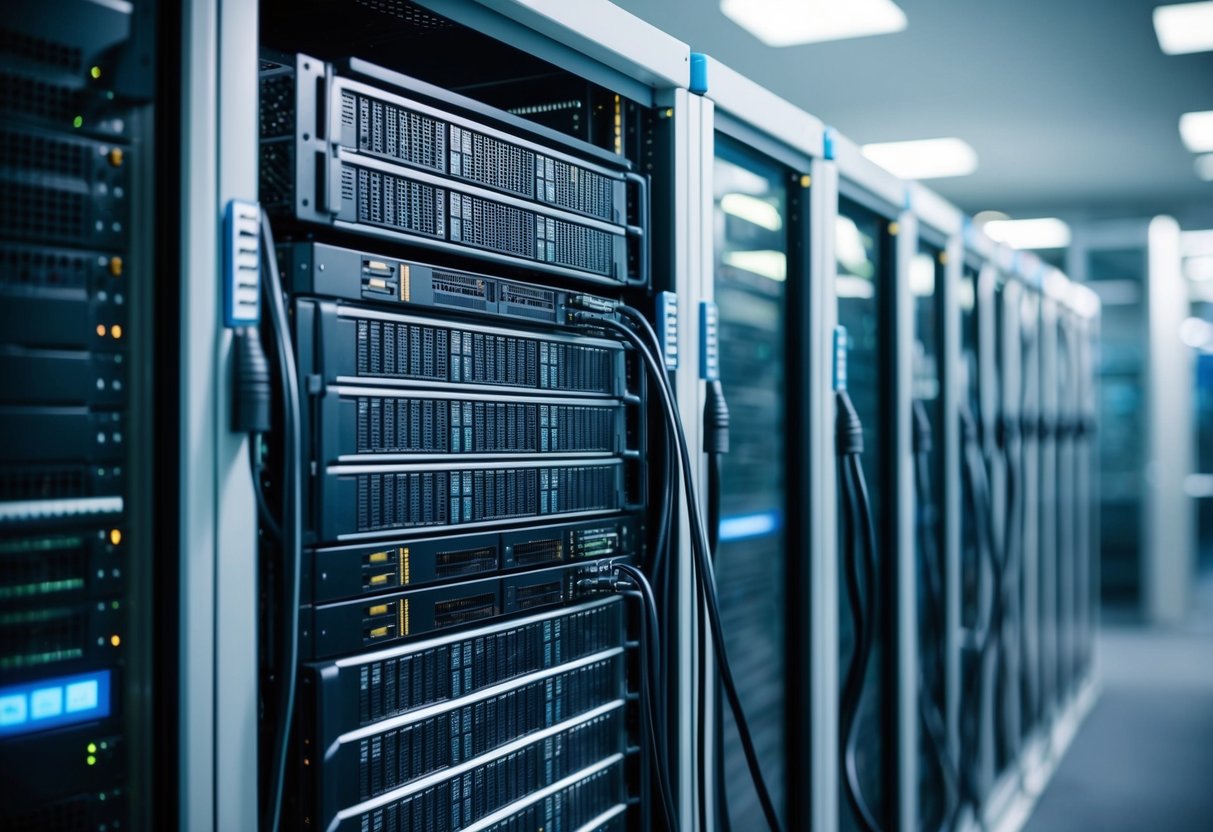Services and server systems play an important role in today’s digital landscape. From small companies to huge corporations, server the environment controls data manipulation, storage, and processing. However, as these systems become more advanced, their management poses a significant problem. This is where server racks come in. Server racks are specifically designed for networking equipment by creating compact, clear, and resilient server infrastructures.
This blog will cover what a server rack and its various categories, how to choose one, and some upcoming trends as well. Whether you are deploying a small office network or overseeing data hubs, having knowledge about server racks could change the entire approach.
Purpose and Benefits of Server Racks
A server rack is a type of multi functional furniture that is used for storing and organizing IT hardware devices, including server, switches, routers, cables, and various data network components. Server racks allow structured storage of hardware while guaranteeing easy access to them when maintenance is needed.
Reasons for Having Server Racks
• Space Saving
Racks save a significant amount of floor area since the hardware components are stacked on top of each other which is very important for organizations with less ground space.
• Management of Overheating Cables
Structures that hold cables aid in avoiding overheating by improving airflow therefore reducing the chances of equipment exceeding set temperature limits. Additionally, they provide proper cable arrangement that assists in minimizing clutter.
Protection for Equipment
In particular, enclosed server rack guard equipment against various threats, including dust, accidental damage, and even unauthorized access.
Scalability
Racks ease scaling up as your organization grows due to inherent modularity. In a well-organized rack system, adding or upgrading components is straightforward.
Types of Server Racks: Open Frame vs. Enclosed
Server racks come in various selections, and you tend to choose from two primary types depending on your setup.
Open Frame Server Racks
In less secure environments, these frames which lack side, front, or back panels (open frame) are preferred. These spaces do not require dust protection.
Advantages
– Better overheating due to improved air circulation.
– Hardware and cable installation are accessible.
– Teams on a budget will find this option cost-effective.
Best For
– Server rooms or lab environments which are in controlled conditions.
Enclosed Server Racks
These racks will contain panels (front, side, and rear) which may be locked for increased security.
Advantages
– Offers protection from external damage, dust, and unauthorized access.
– Ensured temperature management due to integrated cooling measures.
– Ideal for workspaces near offices due to reduced noise.
Best For
– Any private public setup that requires secure clean environments, making them suitable for office spaces.
What To Look For Before Buying A Server Rack
Picking a server rack is a little different from buying something to just accommodate your hardware. Here are tips to double check that you’re making the right choices:
Rack Height and Size
Server racks are measured in the unit “U”, and 1U is equal to 1.75 inches tall. Racks common heights range between 24U to 48U depending on the scale of equipment. Considering space with possibility of future expansion requires careful measurement.
Weight Capacity
The additional servers and newly introduced peripherals add a lot of weight. Server rack need to selected on the merit that they are not within touching distance of weight capacity limit, which avoids overhead of additional components.
Cooling Efficiency
Use of vents and perforated doors cooler and fan placements, actively adds towards the performance of the server increasing its life.
Access and Security
Lockable side panels might help if the rack is stored in an area with other equipment. Similar accessible aids require maintenance adding enables quicker intervention.
Compatibility With Existing Hardware
Ensure that the rack you are buying is compatible with the existing devices. Certain racks require extra mounting kits for some devices at times like 4-post or 2-post variations.
Cooling and Space Optimization For Server Racks
Optimization of the server rack’s functionality focuses best after selection of the rack is done.
Tips for Optimizing Space
• Incorporate Cable Management Tools
Cable wraps, trays, and cable managers keep cords untangled and orderly.
• Use Rack Shelves and Drawers
Add drawers beneath shelving for items that do not easily fit into designated spaces.
• Prepare for Redundancy
Designate spare space for future server additions or backups to reduce congestion.
Cooling Tactics
• Aisle Hot and Cold Containment
Arrange racks into “hot” and “cold” areas to improve air conditioning circulation.
• Add Cooling Fans
Increase airflow with fan trays inside the racks, especially in large setups.
• Regularly Check Temperature
Install temperature and humidity sensors in racks to expedite detection of critical changes.
Emerging Changes in Server Rack Technology
The advancement of technology is influencing the design of server racks to align with current IT frameworks. Here are some changes to anticipate in server rack design.
Environmental Sustainability
Racks in the future will place greater emphasis on conserving energy through enhanced airflow control and use of alternative energy resources.
Smart Racks
Monitoring systems can receive real time feedback about temperature, humidity, and energy consumption enabling IoT technologies to usher in communication enabled racks.
Modularity for Edge Computing
The emergence of edge computing is making it common to find compact, powerful network racks located in remote areas.
Integrating Liquid Cooling
The application of liquid cooling systems within server racks could become commonplace due to their unrivaled heat dissipation capabilities, particularly for AI workloads and high-performance computing.
The Importance Of Server Racks In Your IT Infrastructure
Small or large, server racks enable effective control, management, and maintenance of complex IT systems architecture. Their role in improving airflow and optimizing system security has made these hardware components essential not just for businesses but for sprawling datacenters as well.
Although choosing the right rack and properly maintaining it might seem complicated, the boost to efficiency and longevity from simple maintenance tasks makes a significant difference.
Now, with innovations on the horizon, promises of new technologies tailored for server racks will allow enterprises to remain agile, scalable, and sustain their operations seamlessly. Optimize your server infrastructure today; the greater your organizational structure of the hardware, the better the condition of your servers.



